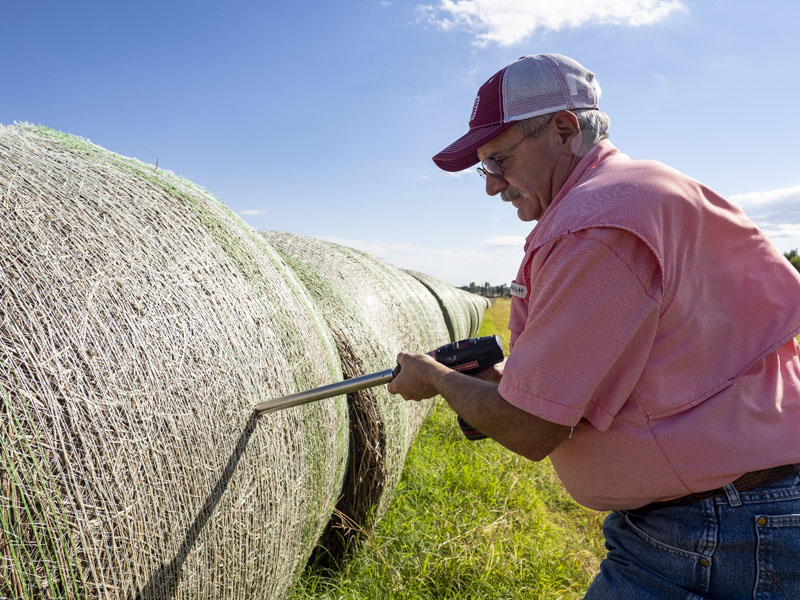Forage Quality and Testing
 Forage testing provides forage and livestock producers with quantitative measures
of forage quality. The results from forage testing are used to calculate ration formulations,
estimate feeding value, and establish market price for hay sales.
Forage testing provides forage and livestock producers with quantitative measures
of forage quality. The results from forage testing are used to calculate ration formulations,
estimate feeding value, and establish market price for hay sales.
The Oklahoma State University Soil, Water, & Forage Analytical Laboratory (SWFAL) measures three principal forage quality values: crude protein (CP), acid detergent fiber (ADF), and neutral detergent fiber (NDF). These three values can then be used to calculate other quality parameters such as digestible protein, total digestible nutrients (TDN), and net energies for maintenance, lactation, and gain.
Research-based publications
Forage Quality Interpretations | Id: PSS-2117
High quality forages are crucial for the livestock industry. Forages furnish essential energy, protein, vitamins, minerals and fiber. In fact, diets of most domestic livestock consist mainly (if not entirely) of forages.
Evaluating Hay Quality Based on Sight, Smell and Feel – Hay Judging | Id: PSS-2588
Hay quality varies due to different factors such as forage species, fertilization, stage of maturity, harvesting practices/curing and storage. Hay produced in Oklahoma consists of grass hay (such as Bermudagrass, lovegrass or tall fescue), legume hay (such as alfalfa and clovers), native hay (whatever is growing in a pasture or range site) and mixtures of these. As a rule of thumb, fertilized and less mature forages may have higher quality than unfertilized and mature ones. Furthermore, proper curing is essential for keeping hay absent of molds and spontaneous fire. Finally, proper storage will maintain the achieved hay quality for longer periods.
Collecting Forage Samples for Analysis | Id: PSS-2589
Forages furnish essential energy, proteins, vitamins, minerals, and fibers in livestock diets. Many factors (e.g. variety, maturity, growing conditions, handling practices, etc.) affect forage quality prior to the time it is fed. As a result, predicting forage quality values from standard books often grossly overestimates or underestimates feeding value. A better way to determine feeding value is to have a representative forage sample tested by a laboratory that uses proven and accepted methods of forage analysis. The first and most important step in obtaining a meaningful analysis is to collect a representative forage sample. This fact sheet describes proper methods for collecting representative samples. If one is not willing to properly sample their forage, the benefits of forage testing will not be realized.
